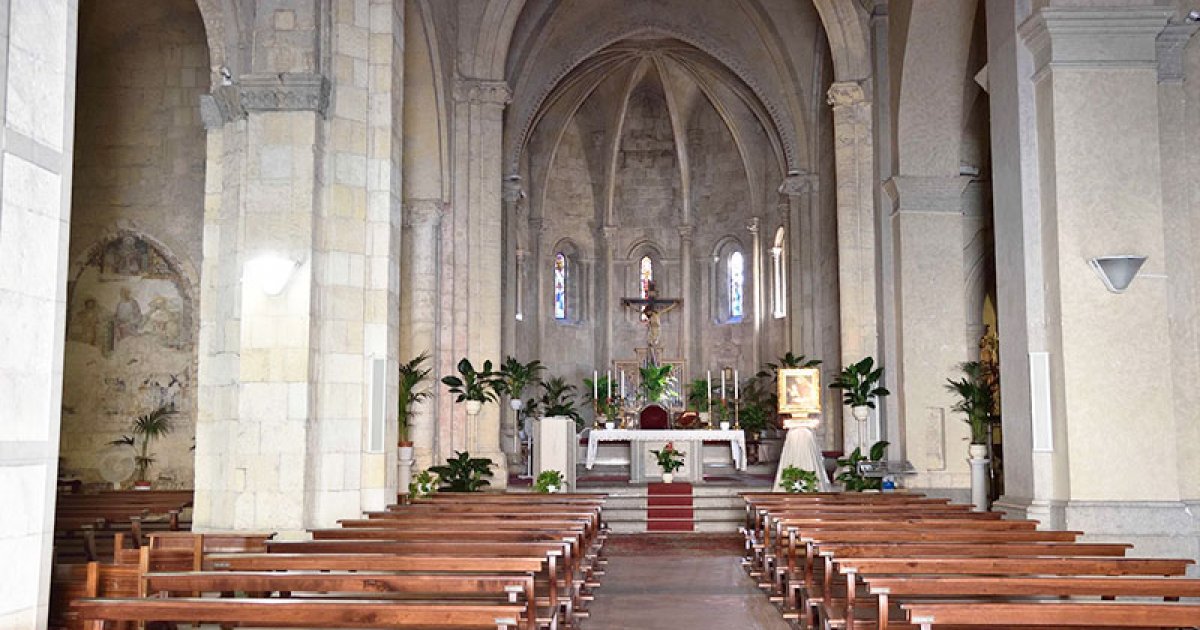CHURCH OF SAN GIOVANNI AND DIOCESAN MUSEUM, Presentation
 Language: English / USA
Language: English / USA
Near the elegant Palazzo Vitelleschi, you’ll find the Church of San Giovanni Gerosolimitano, built between the end of the 12th and the beginning of the 13th century, which originally belonged to the Order of Malta.
The facade, dating to the early 13th century, features a central portal, topped by an arch, and two side portals. If you look at the one on the left, you’ll notice that the architrave above it is in fact an early Christian sarcophagus from the 4th century, with a relief figure of the woman whose body it originally contained, depicted in the ancient gesture of prayer.
Set into the bottom of the beautiful wheel window, you can still see some of the sky blue majolica bowls that originally adorned the whole perimeter of the window.
Inside the church, you can admire the three Romanesque naves, with composite pillars and cross vaults, as well as the splendid early-sixteenth-century fresco The Lamentation of Christ, half of which remains on the wall. The fresco is attributed to Pier Matteo d’Amelia.
The three well-preserved apses are the result of work carried out towards the end of the 13th century, which gave the interior an elegantly Gothic appearance.
The hospital was originally adjoined to the back of the church, and the structure remains to this day.
Now press pause and press play again once you leave the church.
A short distance from the church, at no. 11 Via Roma, is the Diocesan Museum, housed in the 16th-century Bishop’s Palace. Among the numerous works you can admire here, I’d just like to mention: the twelfth-century Romanesque panel painting of Christ Blessing; La Madonna del Latte by Antonio del Massaro, il Pastura; four panel paintings by Monaldo Trofi, an artist who trained in Umbria and Viterbo, which can be dated to the first two decades of the 16th century, including a Lamentation of Christ and a Risen Christ; two paintings by Tommaso Conca, nephew of the better-known artist Sebastiano; the fifteenth-century reliquary busts of San Teofanio and San Lituardo, as well as silverware and fine liturgical garments.



